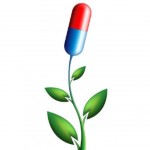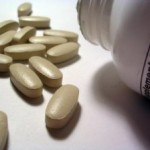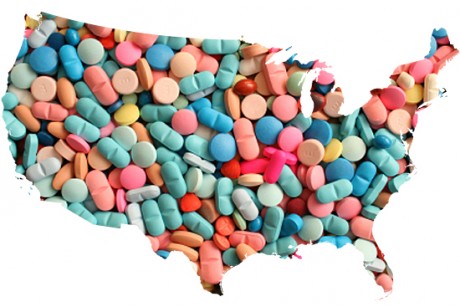For Whom Does the FDA Work and What Are They Trying To Do To Vitamin B Access?
3 John 1:2
Beloved, I wish above all things that thou mayest prosper and be in health, even as thy soul prospereth.
For anyone first reading the Health and Nutrition Update, please read this first: Your Health.
Also, please go to God’s Health System and subscribe to receive the updates.
Always remember that you are in charge of your health and not the doctors. Do not put your life in their hands without first seeking God and His health system.
Commentary
Most Americans believe the FDA is there to protect them from quack remedies, dangerous foods and risky pharmaceuticals. Their primary duty is supposed to be toward the consumers who can’t protect themselves from deceptive claims and dangerous substances in food or medications. But does it really work that way? Are they looking out for Americans’ health before anything else?
There is one major problem with how the system is set up. The FDA, like any other government agency, has as its primary mission its own survival. Budget cuts can threaten the jobs of workers at the agency, so the most crucial aspect of their existence is ensuring that they remain funded. Unfortunately, the way it is structured currently, much of their operating budget comes from fees paid by drug companies during the drug approval process. That automatically gives the agency a bias toward those who are, in effect, paying their salaries.
When it comes to a choice between Big Pharma and average consumers, who do you think gets the most protection? And if drug companies are worried about shrinking profits as their patents on certain drugs expire, what better way to retain profits than to take generally used substances, especially those everyone needs for life, and get the FDA to declare them to be drugs, subject to the approval process. That limits their future availability to the market and essentially grants a patent to a drug manufacturer for that substance. It’s bad enough when a supplement or food is helpful for certain conditions, but when it is necessary to maintain life, the drug company has a captive consumer base.
That is what’s happening more and more at the FDA, as funding is cut further each year. Below are articles discussing this trend and focusing on specific tricks that are being used to keep vital information from the public (such as the health benefits of cherries) and to grant exclusive rights to necessary nutrients (like two separate B vitamins) to drug manufacturers, in order to maintain their profit levels. There are links for you to complain to the FDA about this practice, and to weigh in on proposals for those two B vitamins before they are removed from over the counter and made into drugs requiring a prescription. This affects us all, so we hope you’ll take action with us and let the FDA know Americans are watching them closely.
Babylonian Health System
Whom Does the FDA Work For? This article focuses on colchicine, the active compound in an herbal healer which relieved back pain for 92% of those who tried it. It also was effective in treating gout, but it now has been banned by the FDA so that a pharmaceutical company could make a patented copycat drug. Even if you have neither of these ailments, this article is very important because it exemplifies what is happening across the board to remedies that have been safely used for a hundred years or more. It also contains information on their plan to limit vitamin B6 or P5P because of a drug company proposal.
Increasingly, the FDA is banning natural supplements to make way for drug manufacturers, who don’t realize enough profit once their patents expire. To offset that, they’re turning to natural substances and combining them with other drugs or making patentable formulations of the natural remedies, meaning they have the exclusive right to distribute what once were cheap, effective remedies. As a result, the cost for these remedies are going through the roof, making them unaffordable for some users.
This has forced some users into a subsidized drug program, which means that while drug companies still make their profits, that profit comes from taxpayers. The cost of colchicine has risen from $.09 per pill to $4.85 per pill because of this move. As a practical matter, that means the monthly cost for an average user has risen from $6 to $300. Aside from that, combining these supplements with other drugs means users must take drugs which may be unnecessary to get the original substance.
The article also points to foods formerly considered as such and the rush to reclassify them as drugs for the same purpose.
“For example, cherries and cherry extract have also been found to be a remarkably effective treatment for gout, among other inflammatory conditions. But when cherry marketers and growers cited peer-reviewed scientific research on the health benefits of cherries—FDA shut them down, insisting that this made cherries a drug.
A 1999 peer-reviewed report in the Journal of Natural Products published by the American Chemical Society, the world’s largest scientific society, concluded that tart cherries may relieve pain better than aspirin and other anti-inflammatory drugs. Other research also indicates that a diet rich in cherries reduces total cholesterol by 11%.
When cherry growers began to cite the scientific research, the FDA sent a warning letter to twenty-nine companies that market cherries, threatening regulatory action if they did not remove the scientific information regarding the anti-inflammatory properties of cherries from their websites. The FDA declared cherries had become “drugs” once health claims for a disease were associated with the product. If producers wanted to make health claims, they would have to take cherries through the drug approval process, at vast cost, and with no potential return, since the product could not be patented.”
This is occurring with increasing frequency because much of the FDA’s budget comes directly from drug manufacturers through the drug approval process, so they are protecting the claims and the profits of those manufacturers, regardless of the hardship this causes consumers. Forty percent of their budget is from this source which pits the agency directly against the consumers they’re supposed to protect.
The drug industry has been using a number of strategies to retain their profits including this FDA connection. These include paying other companies to prevent them from making generic alternatives, pushing newer drugs which offer the same benefit as older drugs and reverse payments.
That’s why these three articles on the FDA are so important. All relate to forms of vitamin B which are absolutely necessary for life and which are currently available as low cost supplements. The FDA has plans to remove both vitamin B6 (P5P) and folate from the market, and license them to drug manufacturers for use in proprietary formulas. That would take them out of reach of everyone who needs these vitamins, and that means all of us.
Both this article and the article on the SSRI/Folate Connection (below) have links at the bottom of their individual pages for you to take action and complain about the proposed changes to limit your access to different B vitamins. Just go to each article and click on the “Take Action” button. If enough of us do so, we can head off their plan.
Vitamin B6 (P5P) This is a brief update to the article above, discussing the plan to remove B6 (P5P) from the marketplace.
“Human beings cannot live without vitamin B-6. It is also important for the prevention of cancer and the prevention and treatment of seizures, anemia, mental disorders including schizophrenia, carpal tunnel syndrome, and other conditions. Its effect on carpal tunnel can seem almost miraculous.
A natural form of the vitamin, Pyridoxamine, was recently yanked off the market by the FDA. Why? Because a pharmaceutical company, BioStratum, wanted sole use of pyridoxamine in a drug, a drug which may or may not ever appear. The company filed a so-called citizens petition and the FDA agreed, notwithstanding protests from ANH-USA, other organizations, and thousands of citizens. You might ask: how can Pharma take a supplement off the market and claim exclusive use of it as a prescription drug? The FDA does not presently feel obligated to answer this question.
Unfortunately, this isn’t all the bad news about vitamin B6. All forms of B-6, natural or synthetic, must be converted to P5P, another natural form, for the body to use it.
Another drug company, Medicure Pharma, wants sole use of P5P and so has petitioned the FDA to ban its use as a supplement as well.
Medicure has yet to market a drug made from P5P, but wants the ban to take place now. And never mind that any individual unable to convert synthetic B6 to P5P would have to rely solely on Medicure’s product to stay alive.
The FDA has not yet responded to Medicure’s petition. We have asked you in the past to send a message to the FDA and Congress protesting Medicure’s P5P grab, and the time has come to send some more messages. So if you haven’t sent in a message to the FDA and Congress yet, or even if you have, please send one today.”
“If you missed our urgent Action Alert on the attempt to ban folate from dietary supplements, please take action now!
Last week we told you about FDA’s sneak attack on folate, the B9 vitamin essential to human life. This week, we tell you why the drug industry may want folate all to itself: it could be a ploy to make billions on a new, patented SSRI/folate combo drug.
As clinicians learn more about genetic defects in the genes responsible for the fifteen or so enzymes needed to convert folic acid to the reduced forms of folate the body can use, drug companies have been dreaming of the billions they’d make by turning folate into an expensive patented drug. Now it looks like the FDA is trying to hand it to them on a silver platter.
Much of the population benefits from taking folate—as distinguished from folic acid—in dietary supplements. There are two key things to bear in mind: how much dietary folate you consume, and how much active folate you have available.
If most of your folate is coming from folic acid supplements rather than from food, you may still be gravely folate deficient because of the big variations in how efficiently folic acid is converted to the bioactive form in different people…. Unmetabolized folic acid, as it turns out, is an emerging risk factor linked to increased risk of cancer, heart disease and stroke.
Researchers have also found a strong link between folate deficiency and depression. This is particularly interesting when you consider research showing that 70% of patients with major depressive disorder (MDD) carry the MTHFR mutation.
Taking an old drug, combining it with another ingredient, and convincing the FDA to grant a monopoly on the “new” combo drug is a well-known Pharma trick….
URGENT Action Alert! The FDA must not be allowed to implement this change in its Supplement Facts rules. It will in effect ban the natural B vitamin folate and require supplement producers to use only the synthetic, oxidized form of folate, folic acid. Consumers who are less able to convert folic acid to the safe, reduced forms including the bioactive folate (5-MTHF) our bodies so badly need will have no choice but to use the drug version or die. Send your message to the FDA today, and tell them not to turn a critical, natural B vitamin into a drug through bureaucratic labeling sleight-of-hand!”
Nutrition
Watercress gets perfect score of 100 in study that ranks foods by nutrient levels In a study that examined overall levels of key nutrients, watercress took the number one place among healthy fruits and vegetables. Rather than examining the foods for high levels of a specific nutrient, the study looked at levels of all nutrients important for health found in each fruit or vegetable. The study rated levels of “folate, vitamin D, vitamin A, potassium and protein, based on the assumption of a 2,000-calorie per day diet, and took into consideration the daily requirements of such nutrients.”
“It’s easy to understand that watercress tops this list. Weight for weight, there is more vitamin C in watercress than in an orange, and it also has more calcium than milk and more folate than a banana (2). One bowl of watercress (about 80 grams) has about 42 percent of the recommended daily intake of vitamin A and 50 mg of vitamin C (3).
Its high vitamin C content may play a role in staving off cancerous tumors, as can its folate levels. In fact, it’s been shown that folate consumption can help with breast cancer in particular; one study showed there to be a 22% reduction in breast cancers for women who consumed folate over a 10-year period.”
Probiotics
Lacto-fermented berries Fermented berries are easy to make at home and they’ll stay good for up to 2 months in your refrigerator. Choose any berry or combination of them (except strawberries, which are too acidic to ferment properly). Add a few ingredients such as honey and sea salt, then let sit for a day or two – no cooking is necessary. The recipe is in this article.
“Adding fermented foods to your diet has many benefits. Fermented foods have increased vitamins and enzymes, are easier to digest, increase the amount of good bacteria in your gut and can help your immune system. What a great way to keep healthy this winter!!!
Culturing your own fruits and vegetables at home is a very cost effective way of getting probiotics into your diet. Plus, it is fun! Like a science experiment on your kitchen counter.
There are so many uses for cultured berries. Here are some of my favorites…
Smoothies, Over yogurt, cereal, ice cream, In a juice, Make a yogurt popsicle, Make a sauce (mush the berries or puree them) for pancakes, crepes, waffles, custards. Use your imagination!”
“Scientists have demonstrated through an experiment on obese rats that the consumption of probiotics for thirty days helps diminish the accumulation of fat in the liver. This new findingis a step forward on the fight against Non-Alcolohic Fatty Liver Disease (NAFLD), which is closely related to obesity and diabetes.”
Health
On the link between periodontitis and atherosclerosis
“Chronic oral infection with the periodontal disease pathogen, Porphyromonas gingivalis, not only causes local inflammation of the gums leading to tooth loss but also is associated with an increased risk of atherosclerosis. A new study reveals how the pathogen evades the immune system to induce inflammation beyond the oral cavity.”
Physicians seeing increase in brown recluse spider bites Medical toxicologists are seeing more patients suffering from brown recluse spider bites this summer. The bites have two components, a cutaneous lesion and systemic symptoms which occur less frequently after a bite.
The symptoms following a bite include fever, rash, muscle pain and hemolysis (red blood cell breakdown) which makes a bite especially dangerous for children. Because of that, it is recommended that all children under 12 have a urine test for hemoglobin in the blood, (which indicates hemolysis) after a bite. Adults do not need a urine test unless the other symptoms of fever, rash or muscle pain are present. If none of the symptoms are present, ice is a better treatment than ointments or antibiotics. If any of the symptoms listed above occur, a doctor should be seen immediately.
“The brown recluse spider, also known as the violin spider, is usually between 6-20 mm. It is typically light to medium brown but can range in color from cream-colored to dark brown or blackish gray. It has six eyes instead of eight and can be identified by the violin-shaped marking on its back.
“
Spider venom reveals new secret: Once injected into a bite wound, venom of brown recluse spider causes unexpected reaction Brown recluse spiders, part of the genus Loxosceles, produce a different chemical in their venom than was formerly believed. The discovery could lead to a better understanding of why the bites cause blackened, necrotic lesions or very harmful systemic reactions in certain people, and could lead to new treatments. People living in Arizona will find this especially interesting, since there are more of this genus there than anywhere else in the world, although the spiders are found throughout the continental US.
Although known as a poisonous spider, only about one person of every five years dies from a bite, although less severe but still serious effects are not uncommon. However, many bites are minor enough that the person doesn’t realize he has been bitten. Scientists still don’t know why certain people have such severe reactions to the bite, but they have determined that this newly discovered protein is behind it.
For those who do have a reaction to the venom, the most common response is inflammation that after one to two days can develop into a dark lesion surrounding the bite site. The blackening, or necrosis, of the skin is dead skin cells, evidence of the immune system’s efforts to prevent spread of the toxin by preventing blood flow to the affected area.
“Our bodies are basically committing tissue suicide,” Binford said. “That can be very minor to pretty major, like losing a big chunk of skin. The only treatment in that case is usually to have a skin graft done by a plastic surgeon.”
“If it goes systemic, then it can cause destruction of blood cells and various other effects that can in extreme cases lead to death by kidney failure or renal failure,” Cordes said.
Pet Health
Splash! 5 Must Read Water Safety Tips For Pets While summer can be a fun time for both dogs and owners, there are some important safety tips to keep in mind if your outing includes time at the pool or beach. Here’s my take on the tips. First, while we think that all dogs instinctively can swim, that isn’t the case. Just as children need some encouragement and training, so too do certain dogs. My golden retriever Audie, for example, loves to swim now, but as a young dog he feared going out where he no longer could touch bottom. It was only when I went into the water with him and encouraged him to come that he was willing to try his skill at dog paddling in deeper water.
If you’re taking your dog in a boat, be sure to purchase a canine life preserver and strap it on him snugly so that it can’t come loose. Swimming in deeper water is one thing but trying to make it back to shore from a great distance after an accident is altogether different.
1. Not All Dogs Are Good Swimmers
2. Use A Life Jacket & Preserver
3. Keep Your Pup Close
4. It’s Hot!
5. Water Can Be Dangerous
Conclusion
Your physical health is very important, but of even greater importance is your spiritual health. Man suffers from a fatal spiritual disease called sin, which always leads to death. Romans 6:23 For the wages of sin is death; but the gift of God is eternal life through Jesus Christ our Lord.















